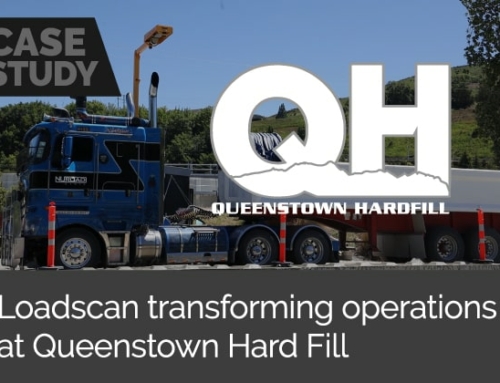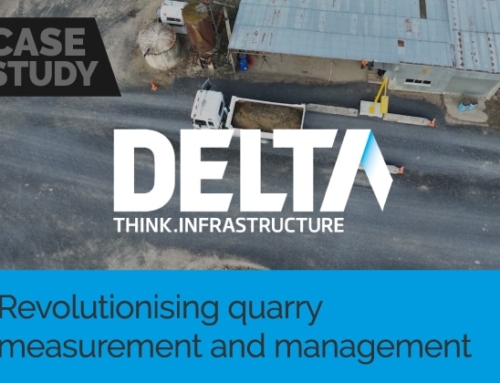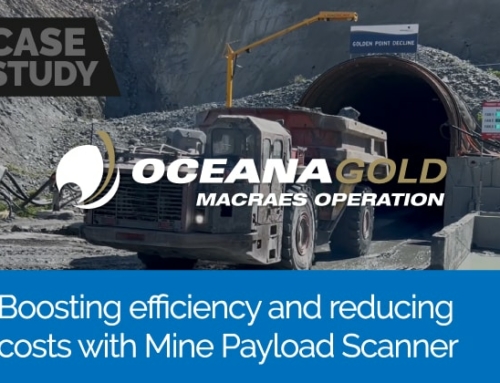Pit & Quarry Magazine Article
This article is adapted from the article featured in Pit & Quarry Magazine August 2015.
Load scanning technologies are positioned to deliver a more accurate profile of material loads.
A load of sand arrives to the construction site. As Carey West and his colleagues observe the load, they realize it’s smaller than the 80 cu. yd. they were expecting.
“We were buying quite a lot of sand from a company charging 80 cu. yd. per truck,” says West, referring to experiences he had while working for his father’s New Zealand construction company nearly 20 years ago. “We put the load on the ground and were like, ‘That’s not 80 cu. yd.’”
West and his colleagues manually measured the piles delivered to determine their volumes. Based on measurements, they concluded the sand supplier was shorting them. “The truck driver would say, ‘You’ve walked all over the sand, you’ve compressed it down,’” West says.
West and his father disagreed. They felt their supplier was taking advantage of them.
In related instances, West says his family’s construction company was shorted because sand they ordered got stuck in the back of the supplier’s truck when unloading. That was unacceptable, he says. “A truck would carry 10 cu. yd., and 1.5 cu. yd. would get stuck in the truck,” West says. “It’s an inefficiency.”
The top image shows an empty Caterpillar AD40 articulated dump truck, while the bottom image shows it loaded.
Because such incidents continuously occurred, West and his father sought to eliminate them and develop a system that could accurately capture material volumes. They started the process of developing such a system in 1998, exploring the idea with a few engineers.
As a vehicle drives under a scanner, the load volume is scanned and a 3D model is produced.
“We found a guy who’s still with me today,” says West, who formed LoadScan Ltd., his current company, in 2012. “He developed a system with a couple of variations with cameras. Within nine months, we were scanning trucks.”
The original product West and his team developed was a load scanner, which is a non-contact, drive-through tool designed to measure bulk material volumes. As a vehicle drives under a scanner, the load volume is scanned and a 3D model is produced.
By comparing the profile generated with one stored for the same vehicle when empty, the scanner can calculate the load volume to within 1 percent, West says. And, if required, a load’s weight can be estimated by converting the load volume using the bulk density of the load material. The weight calculation can be done using software.
The technology is positioned to change how producers and users measure materials. He says it provides both parties with accurate material volume metrics in a matter of seconds.
“A lot of people see us competing with weigh bridges and scales,” West says. “We’re focused on volume, and what you get out of volumes and scanning is density. When densities change, you’re ripping off customers or getting ripped off. My dad didn’t want to be ripped off. He wanted it to be fair, because why should someone else benefit if it rained?”
Opportunity exploration
The question regarding rain is a fair one. Rain particularly affects weights for those handling organic materials, West says. Composters, for example, are affected because their product is capable of retaining significant amounts of moisture.
Say, for example, 1 cu. yd. of dry mulch weighs 400 lbs. West says the presence of moisture will inflate the weight significantly.
“If it weighs more, a customer is going to get less on a truck,” he says.
Composting is one area where LoadScan has made inroads in the United States.
Another market with potential is debris monitoring. FEMA (the Federal Emergency Management Agency) is tasked with cleaning up after natural disasters. They pay by the amount of material in the back of the truck when cleaning up an area.
There is also potential for load scanning in the aggregates and construction industries.
Still, West says aggregate producers are tough to persuade because they’re accustomed to producing and selling in tons.
“They like talking in tons,” West says. “They don’t care about the volume with the respect that they’re legal on the road.”
But just because aggregate producers prefer to operate in tons doesn’t mean the technology doesn’t apply. They’re simply a tougher sell, West says.
“One way we want to target the aggregates industry is by working on that efficiency of production,” he says. “What are they actually producing? We want to get them the volumes they require.”
Take note
While scales are on the ground and susceptible to damage, scanners are mounted above trucks on a pole – out of harm’s way.







